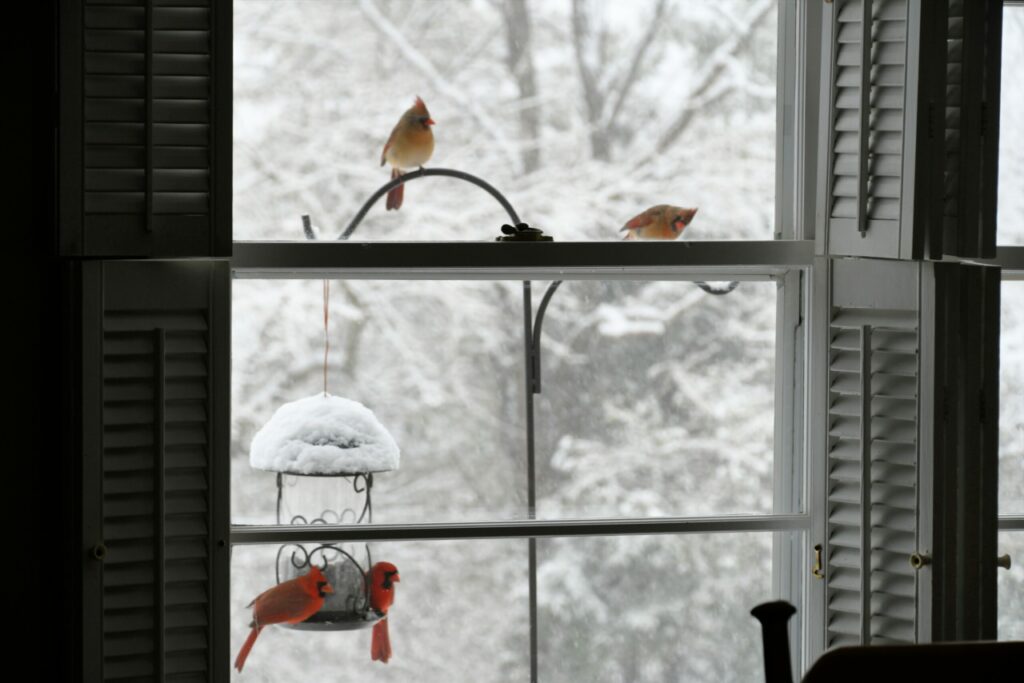Window condensation can be a frustrating issue for homeowners, obstructing their view and potentially causing concerns. Whether you are dealing with condensation on the inside, outside, or between window panes, we have you covered.

Understanding Condensation
Condensation occurs when water droplets collect on a cold surface due to the presence of humid air. Windows are particularly prone to condensation because their surfaces are often colder than the insulated walls. To effectively tackle condensation, it is crucial to understand its causes and implement appropriate preventive measures.
Condensation on the Inside of Windows
Condensation on the interior of windows and doors commonly happens when warm, humid air comes into contact with the cooler glass surface. This issue is especially prevalent during the winter months when the outside air is cold and dry, while indoor air tends to be warm and humid. Everyday activities like cooking, bathing, and even breathing contribute to the humidity levels in your home.
While replacing drafty windows and doors or improving insulation can enhance energy efficiency, it may also lead to increased condensation. Tightly sealed homes retain more humidity, resulting in condensation on colder surfaces. Persistent indoor window condensation can create an environment conducive to mold and mildew growth, which can damage organic materials like wood. Therefore, it is essential to consider condensation as a warning sign and take steps to reduce indoor humidity. For more information, check our our post “how to take care of your windows, the complete guide“.
Reducing Winter Window Condensation Inside Your Home

Condensation on the inside of windows is most common during winter. As interior air becomes drier or the glass surface becomes warmer, condensation starts to evaporate. Here are some practical ways to minimize humidity and prevent condensation:
Use a Portable Dehumidifier or Install a Whole-Home Dehumidifier:
Dehumidifiers are effective devices that extract moisture from the air. They are commonly used to eliminate musty odors, prevent mold and mildew, and can also be employed to reduce condensation on windows. Consider using a portable dehumidifier in specific rooms or installing a whole-home dehumidifier for comprehensive humidity control.
Run Kitchen and Bathroom Exhaust Fans:
Moisture is released into the air during cooking and showering. In newer, tightly sealed homes, it can be challenging for moisture to escape easily. To address this, cover pots and pans while cooking and run the kitchen exhaust fan to remove excess moisture from the air. Similarly, leave the bathroom fan on during and after a shower to circulate humid air out of your home. It is advisable to keep exhaust fans running for approximately 20 minutes after cooking or showering.
Enhance Air Circulation:
Improving air circulation throughout your home can help reduce window condensation. Keep interior doors open to prevent humidity from accumulating in specific areas. Utilize ceiling fans, even during winter, to move the air around and push warm air down from the ceiling. If weather conditions permit, open windows to allow the trapped moist air to escape.
Condensation on the Outside of Windows
Exterior window condensation typically occurs during the summer months when outdoor humidity levels are higher. It develops when the glass surface cools and comes into contact with warm, humid air. Exterior condensation is generally not a cause for concern and can even be an indicator of an efficient home. However, if you wish to reduce condensation on the outside of your windows, consider the following tips:
Trim Shrubbery Near Windows or Doors:
Promote air circulation around your windows by trimming shrubbery and vegetation in close proximity. This allows sunlight to warm up the windows, helping condensation evaporate more quickly. Similar to how dew evaporates off grass as the temperature rises, condensation on windows will also evaporate with increased warmth.
Raise the Temperature Setting on Your Air Conditioner:
Increasing the temperature setting on your air conditioner can help keep your window glass at a warmer temperature. When warm air encounters a cool surface, like a glass, it can result in condensation. By raising the temperature of the glass, you can minimize the occurrence of condensation.
Condensation Between Window Panes

Condensation between window panes is usually caused by a seal failure, allowing moisture to seep in between the glass layers. If you notice condensation between the panes, it is likely time for window replacement. Contact your local Wholesale Window and Door representative to schedule a free, in-home consultation and discuss suitable solutions for your needs. For more information about condensation inside panes of glass, check our our post “5 signs your windows need to be replaced“
Window condensation can be managed effectively by understanding its causes and implementing preventive measures. Whether you are dealing with condensation on the inside, outside, or between window panes, Wholesale Window and Door has provided you with practical strategies to reduce and control it. By addressing condensation promptly, you can ensure the longevity and efficiency of your windows while maintaining a comfortable and healthy home environment.